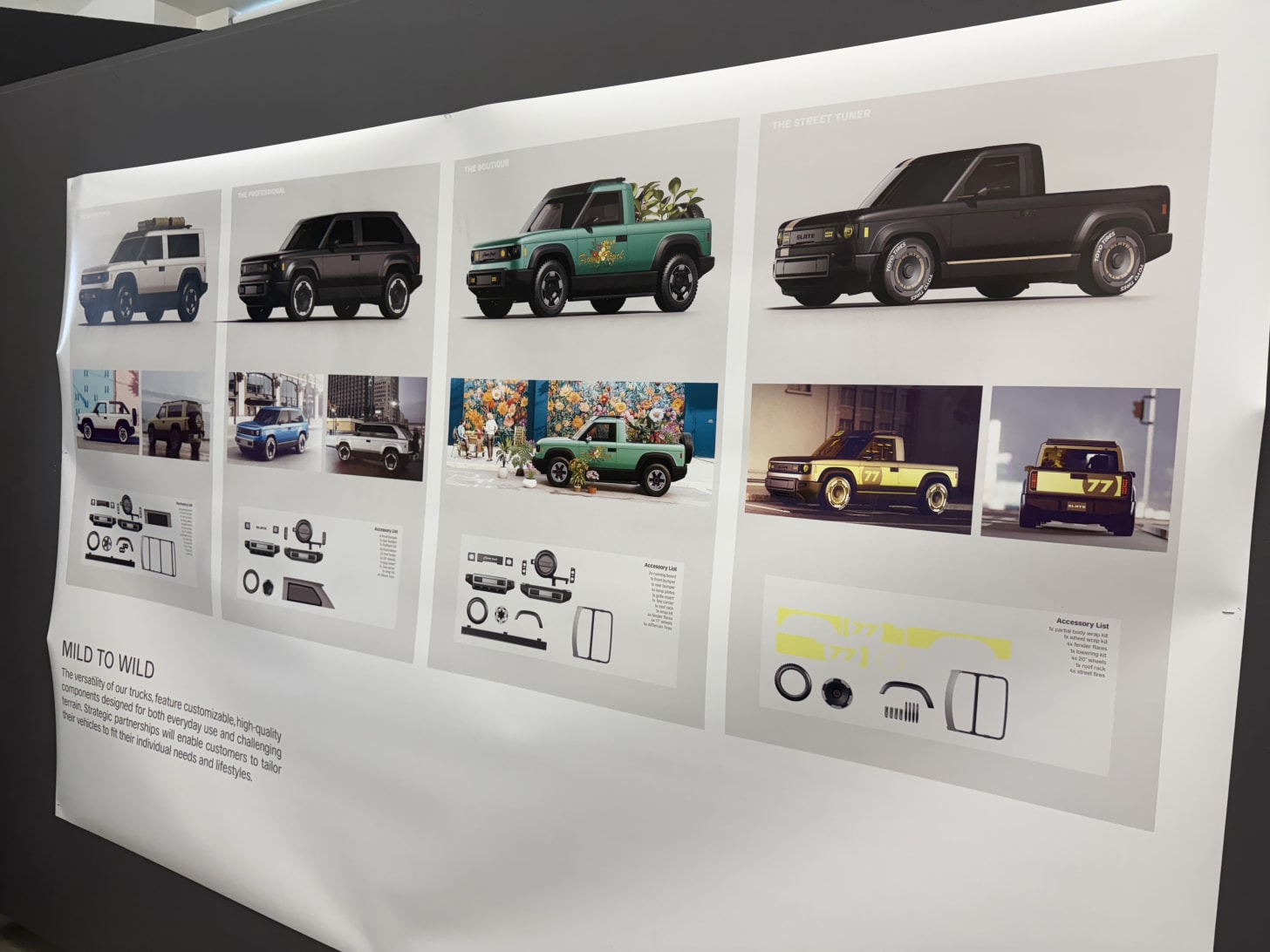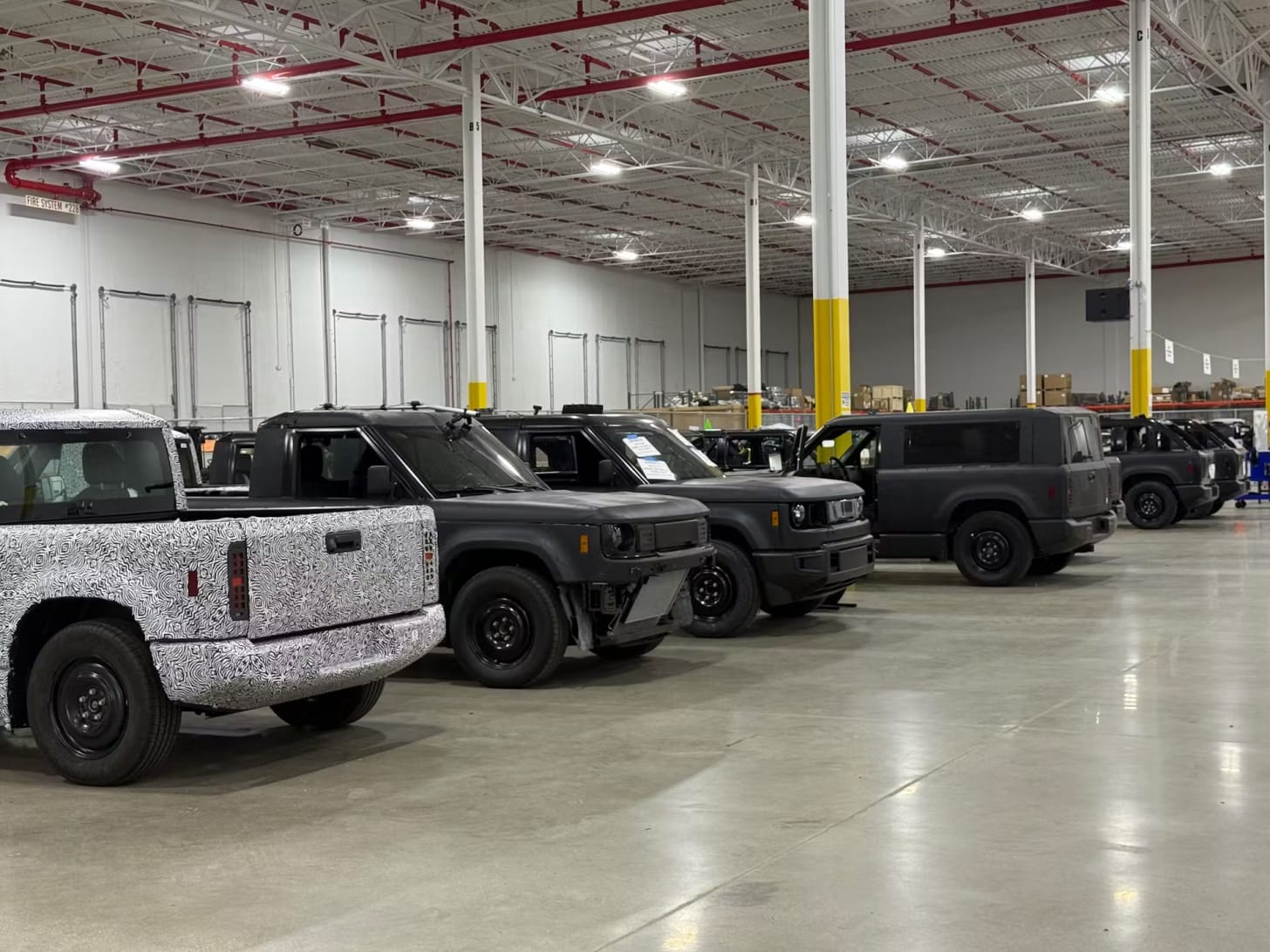Inside Slate Automotive’s scrappy, Bezos-backed plan to rethink the EV industry from the ground up
In a space dominated by $80,000 trucks with touchscreens the size of iPads and software platforms that still glitch, Slate Automotive is taking a different route — and it just might be the most interesting EV story of 2025.
Their bet? That most automakers are going in the wrong direction — and that a stripped-down, $25,000 electric truck (no subsidies, no gimmicks) might actually be what the market wants.
I spent time inside their Michigan facilities this week — headquarters, design studio, and prototype line — and what I saw is best summed up by a phrase they’ve literally plastered across the office walls:
“Fast, frugal, and scrappy.”
Here’s how they’re pulling this off.
Most automakers are chasing autonomy, interactivity, and luxury. Slate’s eliminating all of it. No self-driving tech. No 500-feature infotainment system. No need for a six-figure R&D department to troubleshoot your door handles.
Instead, the cost savings are structural:
-
Composite body panels mean no stamping operation and no paint shop, which alone saves them $400–600 million in capex.
-
Their trucks have around 600 parts. For reference, most vehicles today use over 2,500.
-
They’re leveraging supply chain simplicity and design modularity to keep costs low and production nimble.
And yes, the trucks actually drive — I watched them roll off the beta line myself.
Design Studio: Herschel Bags, Camping Gear, and Hello Kitty in the Frunk
Their design team is building the truck with customization over complication. Think:
🎒 Herschel bags
🥃 Flasks
🔥 Outdoor gear
Not exactly the usual source material for auto design — but that’s the point.
The truck comes without power windows, without a giant display screen, but it’s modular.
You can wrap it. You can swap out light covers. You can even turn it into a five-seat SUV.
There’s also a prototype frunk with drainage and cupholders — tailgate parties up front.
A Factory Without Flash
The prototype facility is a big repurposed GM warehouse, about 20 minutes from the design studio. Inside are rows of hand-built trucks in various stages — a few Mahindra Roxor conversions, a bunch of true Slate beta builds headed for crash testing and promo tours.
It’s not flashy. It’s not sleek. But it’s functional, and that’s the entire point.
The Big Idea
Slate thinks the auto industry has been adding too much. Too many chips. Too many features. Too many costs passed on to consumers who just want something that works.
They’re flipping the model:
🔋 No autonomous driving plans
🔧 No touchscreen command center
📉 Just a $25,000 electric truck, rolling off a small, cheap-to-run production line
The company says it’ll be profitable within a year of launch. That launch? Late 2026.
Parting Thoughts
Slate’s not trying to win the luxury EV race. They’re betting on affordability, modularity, and real utility.
The question isn’t whether they can make the truck. It’s whether Americans actually want one that doesn’t try to be a spaceship.
Either way, the auto market needs a shakeup — and Slate just might be the one to deliver it.
If you want more inside stories at the intersection of real estate, capital markets, and American industry — make sure you’re subscribed.



